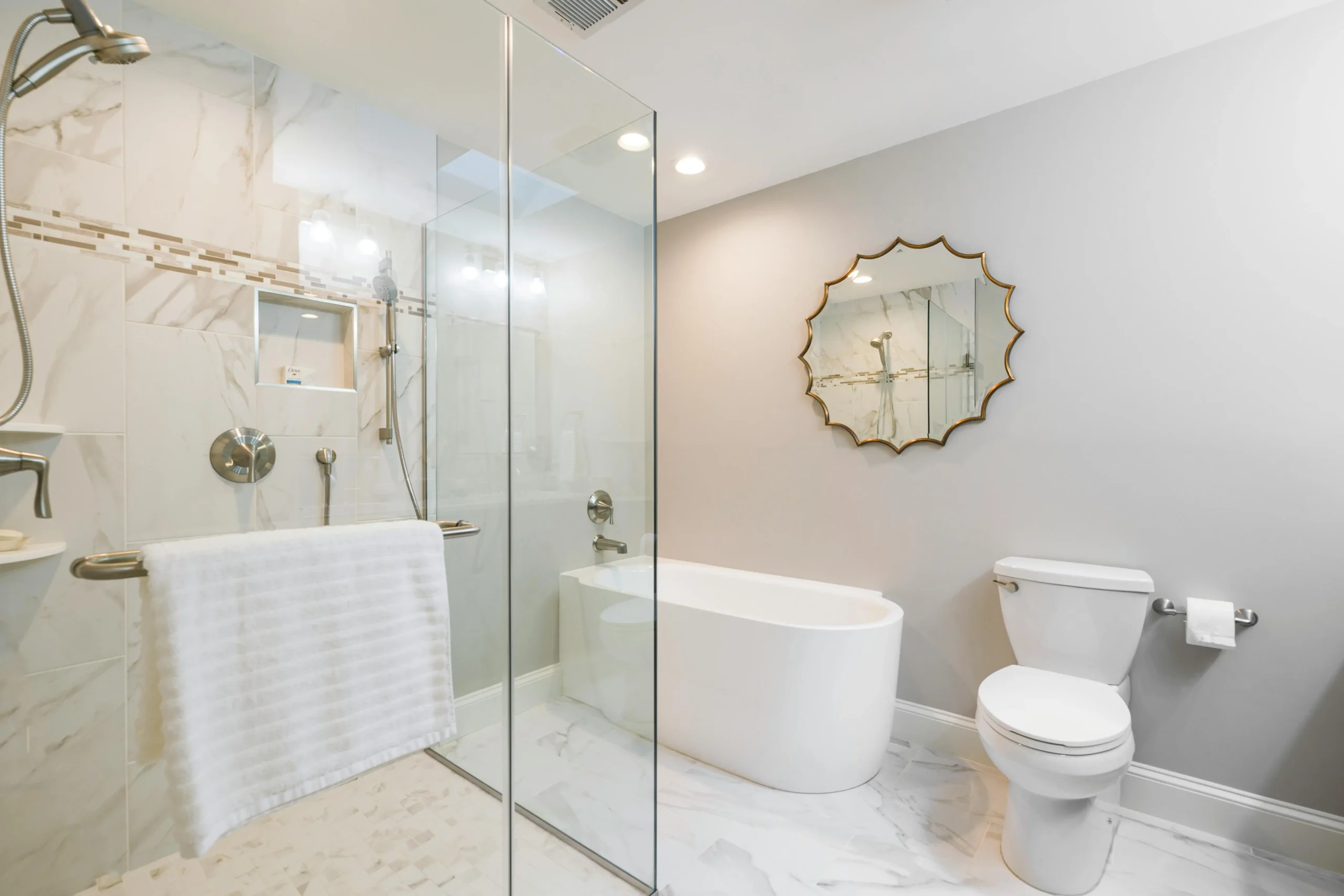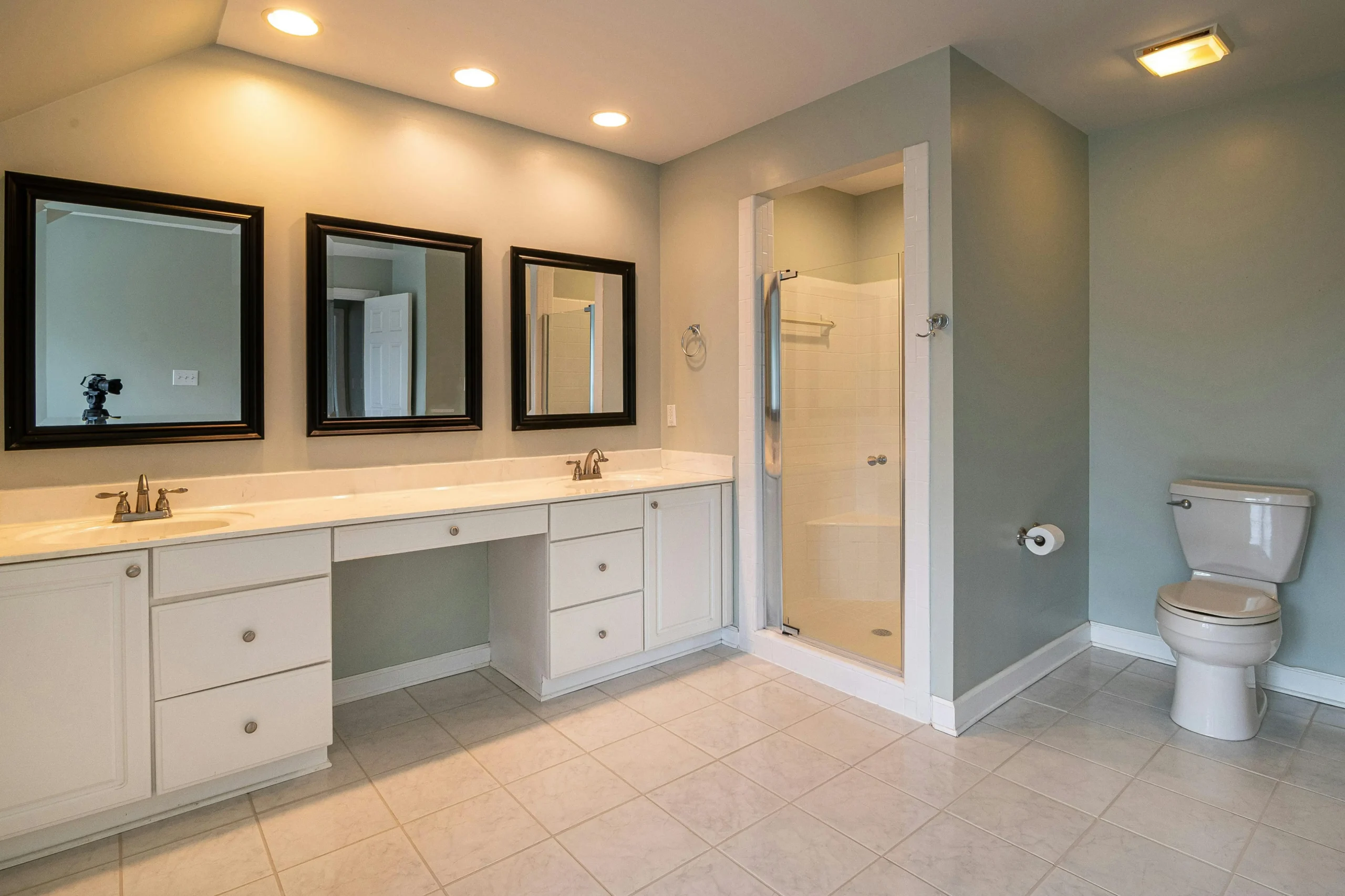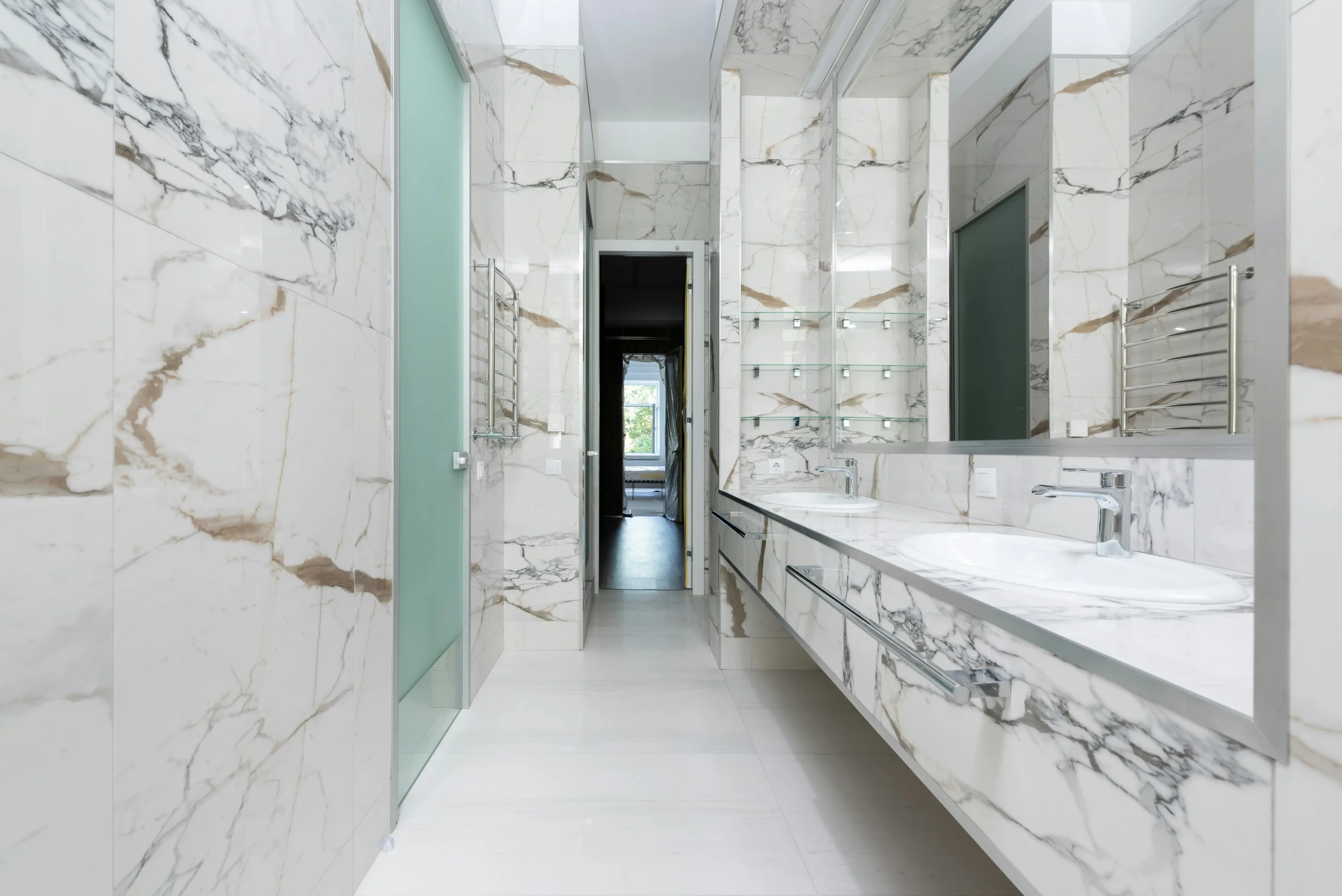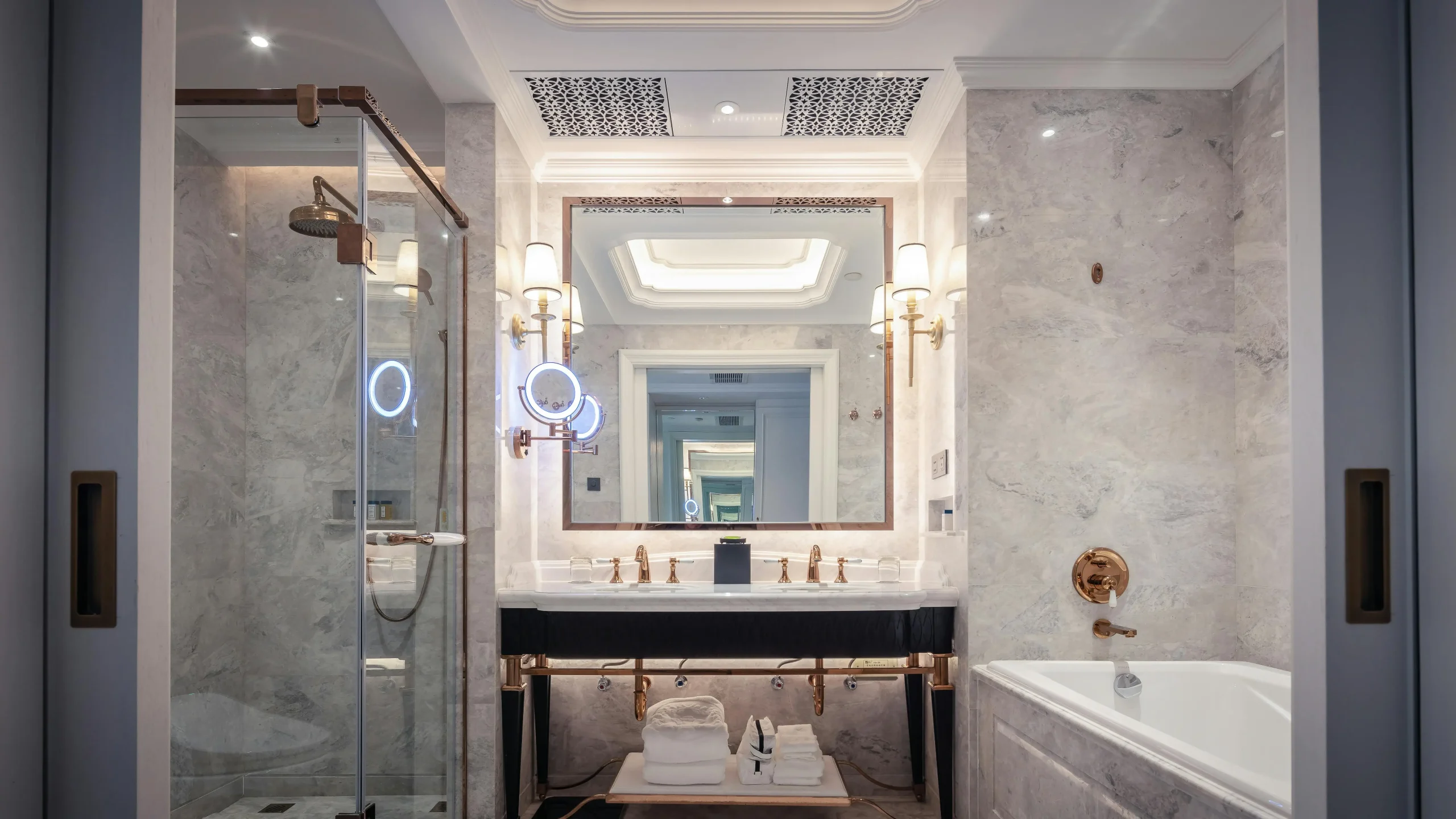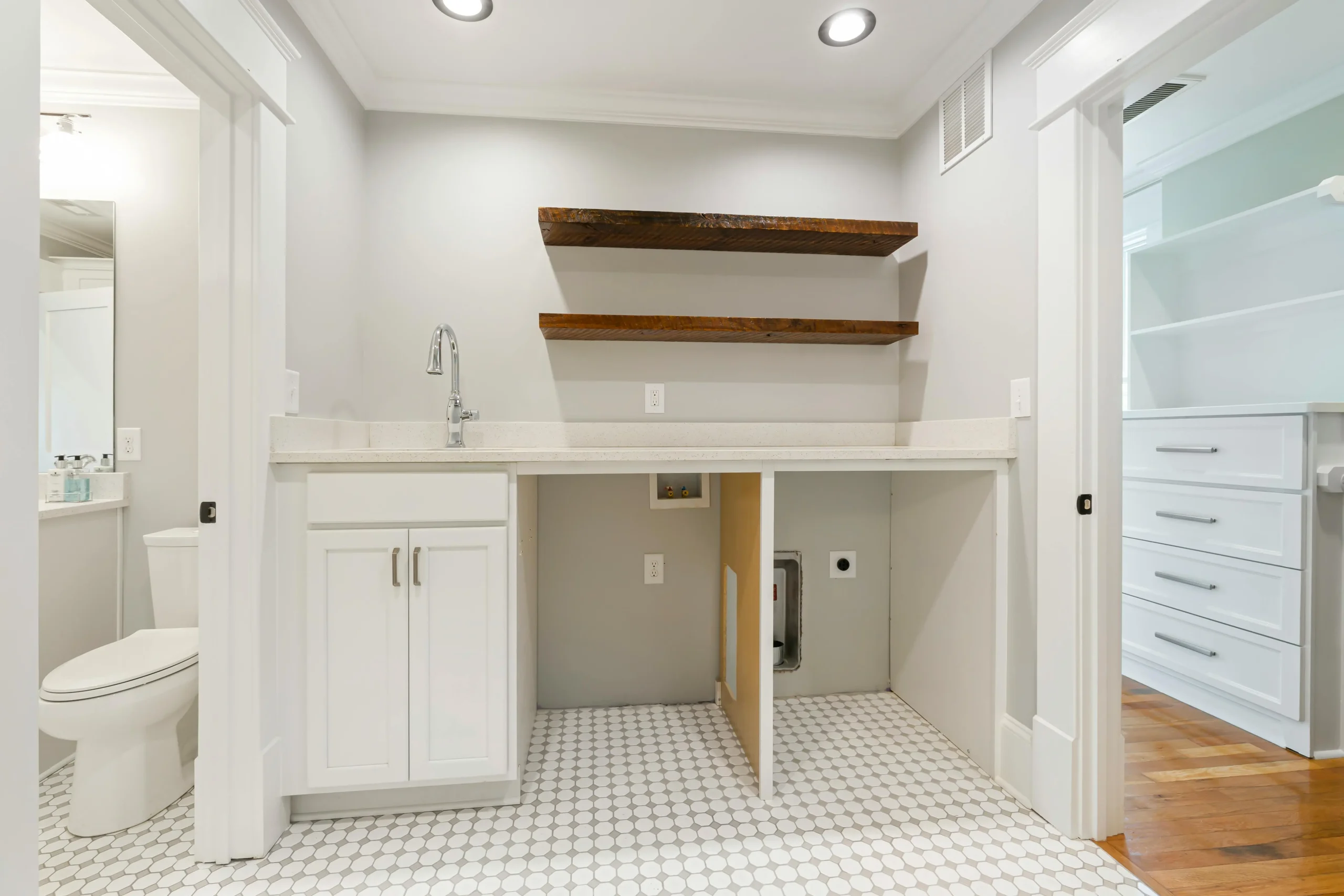Breaking Down Greensboro Kitchen Remodel Costs
When planning a kitchen remodel in Greensboro, it’s essential to understand that your total costs are composed of several components working together. Your investment covers design fees, material purchases, labor expenses, permits, and a contingency for unexpected issues. Local market trends, regional labor rates, and supplier availability in Greensboro can significantly impact the overall cost. Projects vary from minor updates, like a cabinet refresh, to complete overhauls involving structural modifications and custom designs. Analyzing each cost element from the outset provides clarity on your budget allocation. By breaking down the expenses, you can prioritize upgrades that yield the highest impact on functionality and aesthetics. This approach also aids in negotiating with contractors and suppliers. With a clear cost breakdown, you’re better prepared to manage your project and achieve a successful remodel.
Factors Influencing Remodeling Costs
Several key factors influence the overall cost of a kitchen remodel in Greensboro. The size of your kitchen and the scope of work, including whether you’re performing cosmetic updates or full structural changes, play a major role. Material quality and selection—such as high-end countertops versus more affordable alternatives—affect the final price. Labor rates in Greensboro can vary based on contractor expertise and market demand. Design complexity, including custom features and layout reconfigurations, often leads to higher costs. Permits, waste disposal, and additional unforeseen expenses (like water damage or outdated wiring) further impact your budget. Seasonal fluctuations and local supplier promotions may also offer cost-saving opportunities. Understanding these factors in detail helps you set realistic expectations and develop a budget that accounts for every variable in your remodel.
Material Costs for Major Kitchen Renovations
Material selection is one of the most significant factors in determining the cost of your kitchen remodel. Premium materials, such as natural stone countertops, custom cabinetry, and designer backsplashes, will elevate your space but often come with higher price tags. In contrast, opting for cost-effective alternatives like laminate countertops and stock cabinets can help manage expenses without compromising functionality. Flooring options—whether hardwood, tile, or luxury vinyl—also contribute substantially to your overall cost. The durability and aesthetic appeal of materials influence not only your immediate budget but also long-term maintenance and home value. Researching local suppliers in Greensboro and comparing samples can help you find the best quality within your price range. Quality materials add to the longevity of your remodel, making them a worthwhile investment over time. Balancing cost and quality is key to achieving a functional and stylish kitchen renovation.
Greensboro Labor Costs for Kitchen Remodels
Labor is a critical component of your kitchen remodel and can account for a significant portion of your budget. In Greensboro, labor costs are influenced by the complexity of the work, the experience of the contractors, and local market demand. Skilled professionals are required for tasks such as demolition, installation of cabinetry, plumbing, electrical updates, and finishing details. Detailed, transparent estimates from contractors help you understand the breakdown of labor costs. Comparing multiple bids allows you to find competitive pricing without sacrificing quality. High-quality workmanship is essential to avoid costly mistakes and future repairs. Efficient project management and clear communication with your team ensure that labor costs remain within budget while meeting timelines. Investing in reliable professionals ultimately contributes to a successful remodel that enhances both the look and functionality of your kitchen.
Kitchen Remodel Cost Guide for Beginners
For those new to kitchen remodeling, a comprehensive cost guide is essential for setting realistic expectations. Begin by researching average remodel costs in Greensboro to establish a baseline for your project. Your remodel budget should cover hard costs such as materials and labor as well as soft costs like design fees and permits. Breaking the project into phases can make it more manageable and help you prioritize which updates are essential versus nice-to-have. It’s important to account for a contingency fund, typically 10-20% of your total budget, to cover unexpected issues. Detailed planning and budgeting allow you to compare quotes from multiple contractors, ensuring that you secure competitive pricing. A well-documented cost guide empowers you to make informed decisions throughout the remodeling process. With careful preparation, even beginners can navigate the complexities of a kitchen remodel with confidence.
Budgeting Tips for Kitchen Remodels
Effective budgeting is critical to ensuring that your kitchen remodel stays within financial limits while achieving your design goals. Start by listing all expected expenses, including materials, labor, permits, and design fees. Allocate an additional 10-20% of your budget as a contingency for unexpected issues. Research multiple quotes from local suppliers and contractors in Greensboro to secure the best rates. Keep track of every expense throughout the project to ensure that you stay on budget. Prioritize spending on areas that add the most value and functionality to your kitchen. Consider phasing your remodel if budget constraints are tight, allowing you to spread out costs over time. Clear communication with your contractor about your budget will also help in identifying cost-effective alternatives without compromising quality.
High-End vs. Budget Kitchen Remodel: Cost Differences
The decision between a high-end and a budget-friendly kitchen remodel will have a significant impact on your overall investment and final design. High-end remodels typically feature custom cabinetry, premium countertops, designer lighting, and state-of-the-art appliances, all of which command higher prices. These projects often involve intricate design details and bespoke finishes that add both luxury and functionality. In contrast, budget remodels focus on essential updates using standard materials and cost-effective solutions that still deliver a modern, refreshed look. Midrange projects can strike a balance between quality and affordability, often using a combination of stock and semi-custom components. Your choice should reflect your financial capacity, design aspirations, and long-term home value goals. Understanding the differences between these approaches allows you to prioritize upgrades and allocate your budget accordingly. Making informed decisions here will ensure that your remodel meets your expectations without overspending.
Impact of Kitchen Size on Remodel Cost
The size of your kitchen is a fundamental factor in determining your remodel’s overall cost. Larger kitchens require more materials, more labor hours, and often more complex design solutions, which naturally drive up expenses. Even small changes in a spacious kitchen can add up quickly due to the increased quantity of materials needed. Conversely, smaller kitchens might allow for targeted improvements that maximize space without a significant financial outlay. An accurate measurement of your kitchen and a clear understanding of its layout are crucial for estimating material quantities and labor requirements. Planning your design to efficiently use every square foot can also help keep costs in check. By tailoring your remodel to the actual size of your kitchen, you can optimize your budget and ensure that every upgrade contributes meaningfully to the overall functionality and aesthetics. Assessing the impact of kitchen size early in the planning process is essential for creating a realistic and effective remodel plan.
Average Price of Kitchen Remodels by Region
Kitchen remodel costs can vary widely by region, influenced by local economic conditions, labor demand, and material availability. In Greensboro, market trends and regional cost-of-living differences play a significant role in determining average prices per square foot. Researching local case studies and consulting with area professionals can provide you with a realistic benchmark for your remodel. This regional insight helps you set a clear budget and negotiate better deals with contractors and suppliers. Understanding how your remodel cost compares to similar projects in the area allows you to adjust your expectations and plan more effectively. A comprehensive review of regional pricing ensures that you are neither overpaying nor compromising on quality. By staying informed about local trends, you can create a remodel plan that aligns with the current market and maximizes your investment.
FAQs: Understanding Major Kitchen Value
Homeowners often have questions about which aspects of a kitchen remodel add the most value to their home. Frequently asked questions include inquiries about the return on investment for different upgrades, such as modern appliances, updated cabinetry, and energy-efficient lighting. Many ask how long the remodel process typically takes and what disruptions they might expect. Other common questions focus on how a remodel can improve home functionality and overall resale value. Understanding which upgrades provide the best balance of aesthetics, functionality, and cost is key to planning a successful remodel. Clear answers to these FAQs help demystify the process and guide you in making informed decisions. By addressing these common concerns, you can better prioritize investments that will increase both your daily satisfaction and the long-term market value of your home.
What Can I Expect for Return on Investment?
Return on investment (ROI) is a critical consideration when planning your kitchen remodel in Greensboro. Studies show that a well-executed kitchen renovation can recoup between 60% to 80% of the initial investment at resale, although actual returns vary based on project scope and market conditions. Upgrades that modernize the space—such as energy-efficient appliances, updated cabinetry, and high-quality countertops—tend to offer the best ROI. While high-end remodels require a larger upfront investment, they often result in a significantly more appealing and marketable kitchen. Budget-friendly updates, when executed thoughtfully, can also enhance home value without a substantial financial burden. Consulting with local real estate professionals can provide insights tailored to the current market trends in Greensboro. With careful planning and strategic investments, your kitchen remodel can serve as both a personal upgrade and a smart financial decision. Understanding your expected ROI helps you set realistic goals and ensures that your renovation adds lasting value to your home.
Frequently Asked Questions
Is $30,000 enough for a kitchen remodel?
A $30,000 budget can be sufficient for a modest kitchen remodel, especially when you focus on strategic updates that improve both functionality and appearance. This budget typically covers essential updates such as mid-range cabinetry, countertops, and appliances without requiring extensive structural changes. However, the overall adequacy of this amount depends on the current condition of your kitchen, the materials chosen, and regional labor costs. It’s important to note that while $30,000 may work well for updating a mid-range kitchen, high-end finishes or custom work could quickly push the price above this threshold. Careful planning and prioritizing the most impactful changes are key. In many cases, homeowners are able to achieve a significant transformation with this budget by focusing on core improvements and managing costs efficiently.
What is a good budget for a kitchen remodel?
A good budget for a kitchen remodel really depends on the scale and quality of the project you envision, as well as your location and the specifics of your space. Many homeowners find that for a comprehensive remodel, a budget in the range of $30,000 to $75,000 is a realistic starting point, allowing for updated appliances, new cabinetry, countertops, and flooring. For those aiming for a high-end, luxury kitchen, the budget could exceed $100,000, while smaller, more cosmetic upgrades might require significantly less. It is essential to account for hidden costs like permits, electrical work, and plumbing adjustments that may arise during the project. Establishing a clear list of priorities and obtaining detailed estimates from trusted contractors will help in setting a budget that meets both your needs and financial comfort. Ultimately, the right budget is one that aligns with your goals, ensuring quality results without unexpected financial stress.
What is the average cost of a brand new kitchen?
The average cost of a brand new kitchen can vary widely depending on the size of the space, the materials used, and the complexity of the design. Generally, for a full kitchen renovation that includes new cabinetry, appliances, countertops, flooring, and lighting, homeowners can expect to invest anywhere from $50,000 to $100,000 or more. This range reflects differences in regional labor costs and the quality of fixtures selected. High-end remodels that incorporate custom design elements or premium materials can exceed this range significantly, while smaller or more basic renovations might come in at a lower price point. Other factors, such as the layout and whether any structural changes are necessary, also play a role in the overall cost. Engaging with professional designers and contractors early in the planning process can provide a more accurate estimate tailored to your specific project.
What is the most expensive part of a kitchen remodel?
In many kitchen remodels, cabinetry often represents the most significant expense, frequently consuming a large portion of the overall budget. Custom or semi-custom cabinets, especially those designed to maximize storage and aesthetic appeal, can be quite costly compared to off-the-shelf alternatives. Alongside cabinetry, high-end appliances and premium countertop materials like granite or quartz can also substantially drive up costs. Labor, particularly for specialized installation and precise craftsmanship, further adds to the expense. Moreover, if the kitchen design includes complex layouts or structural changes, the installation costs can escalate quickly. Balancing the desire for luxury finishes with cost-effective alternatives is key to managing this major expense while still achieving a beautiful and functional space. Careful planning and prioritization of elements can help control these costs without sacrificing quality or design vision.

